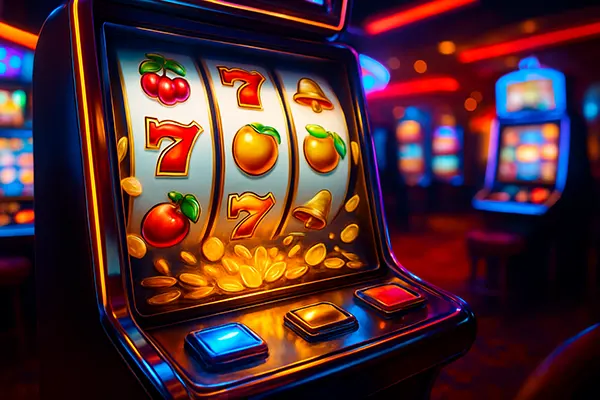
How Online Casinos Use Colours, Sounds, and Animation to Influence Player Behaviour
Modern online casinos employ a strategic mix of visual and auditory stimuli to shape player experience and drive behaviour. These techniques are not random—they stem from behavioural psychology and the evolving discipline of neurodesign. From colour palettes to soundtracks and animated sequences, every element is designed to hold attention, evoke emotion, and subtly influence decision-making.
Neurodesign in Casino Interfaces
Neurodesign is the application of neuroscience principles in design to evoke targeted emotional responses. In the context of online gambling, it refers to crafting visual and auditory experiences that stimulate specific brain areas responsible for pleasure, excitement, or urgency. This includes manipulating dopamine triggers through win animations and reward anticipation mechanics.
Key examples include rapid symbol animations when spinning the reels, “near miss” visuals where players almost win, and ambient sounds designed to maintain focus. These design choices are meant to keep users engaged and reduce cognitive dissonance, making gameplay feel more rewarding even when players lose.
Colour schemes also play a pivotal role. Red, for instance, signals excitement and urgency, commonly used for “Spin” or “Bet” buttons. Blue tones convey calm and trust, often dominating backgrounds to keep players feeling secure and relaxed while they play.
Classic Slot Machines vs. Digital Environments
In contrast to the mechanical simplicity of traditional slot machines, modern online games are immersive multimedia experiences. While older machines relied on flashing lights and basic sound effects, digital slots include cinematic introductions, interactive bonus rounds, and layered audio to deepen player engagement.
Online casinos today mimic popular video games in pacing and design complexity. Developers use storytelling, progressive difficulty, and personalised animations to enhance immersion. This transition allows more nuanced influence on player psychology—offering not just entertainment but a reactive environment that adapts to play patterns.
Moreover, new formats allow for integrating behavioural tracking tools. These detect how long users engage, when they are most likely to leave, and trigger animations or bonuses accordingly. Unlike physical machines, online games can dynamically adjust visual and sound inputs based on real-time analytics.
The Role of Sound in Shaping Emotions
Sound design is a powerful tool used to deepen emotional involvement and manipulate risk perception. Winning sounds are often disproportionately joyful compared to the actual reward—e.g., a small win may be celebrated with a loud jingle, creating the illusion of significant gain.
Background music is typically calm and repetitive, designed to reduce fatigue and keep users in a flow state. This auditory backdrop minimises distractions, enabling players to focus solely on the game interface. It also creates a sense of continuity, which is essential for maintaining extended engagement sessions.
Losses are rarely emphasised. Instead of silence or negative cues, most games use neutral or positive sounds, softening the psychological blow. This technique—referred to as “loss disguising”—helps retain players and reduces the conscious impact of gambling losses.
Audio Loops and Psychological Anchors
Audio loops in games are carefully calibrated. Certain frequencies stimulate brain activity linked to concentration and habit formation. These audio loops become familiar to the player and can trigger a sense of urgency or motivation even outside of gameplay.
Melodic cues, such as rising tones during bonus rounds or high-frequency ticks before a spin ends, are used as psychological anchors. They prepare the player for a potential reward, releasing dopamine in anticipation, regardless of the outcome.
Casino game developers also borrow techniques from retail psychology: celebratory sounds and auditory illusions that amplify reward sensations. These techniques aren’t just embellishments—they’re engineered to manipulate player attention and reward perception.

Animation Effects and Cognitive Biases
Animations are not only aesthetic; they also serve as psychological nudges. Flashing lights during a win, bouncing coins, expanding wild symbols—all these trigger excitement and simulate progress. These effects strengthen the so-called “illusion of control,” where players feel their actions influence the outcome.
Another critical mechanism is the “near win” animation. When players almost win, animations exaggerate how close the outcome was. This tactic capitalises on the gambler’s fallacy and the sunk cost effect—players feel encouraged to keep playing because a big win “feels” imminent.
Animations also affect perception of time. Fast transitions, light bursts, and continuous movement create a flow state that can distort the player’s sense of session duration, leading to longer gameplay than originally intended.
Motion and Reward Anticipation
Fast-moving elements like spinning wheels or expanding graphics build anticipation. These are crucial in bonus games or jackpot rounds, where tension is gradually increased through timed animations and audio crescendos. The suspenseful build-up contributes to emotional arousal that reinforces play behaviour.
Developers strategically delay outcomes using slow-motion reels or build-up animations before revealing results. This anticipation loop taps into variable-ratio reinforcement—the same technique used in social media and video games to maintain user retention.
In essence, animation is not just visual feedback—it’s a psychological tool to control pacing and amplify perceived rewards. Combined with colour and sound, it completes the sensory triangle that governs player engagement and behaviour.
